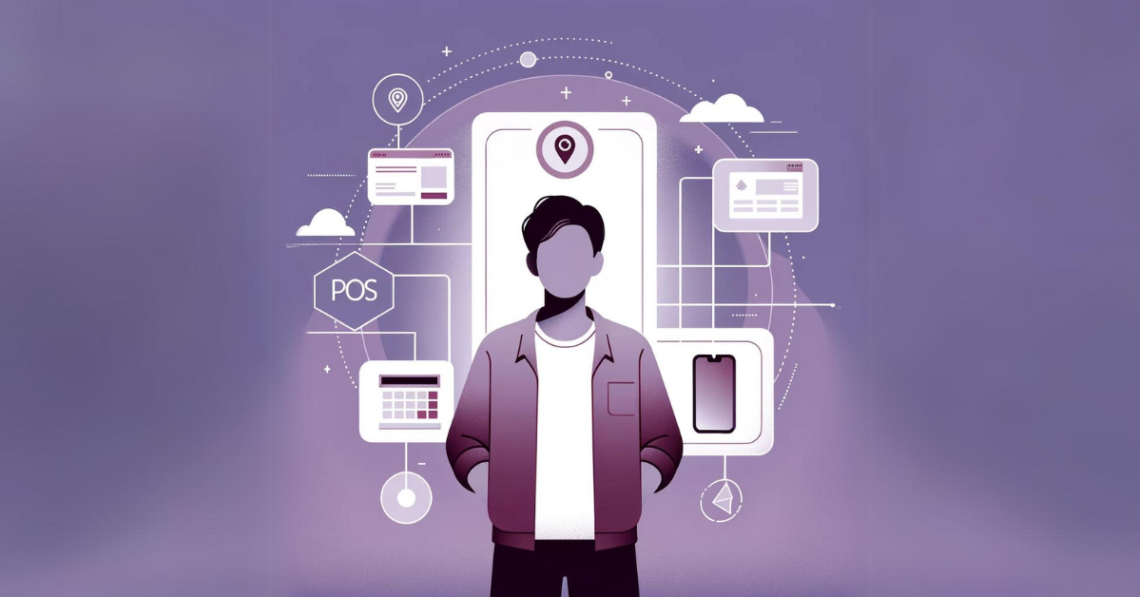Point of Sale (POS) tasks assume a urgent part in the retail ventures, giving a basic connection point among organizations and clients. This exploration blog dives into the specialized subtleties of POS activities, including equipment, programming, security, and arising patterns.
The operations of Point of Sale (POS) have undergone a transformation, moving from the use of conventional cash registers to sophisticated, technologically driven systems. In the present high speed retail areas, the proficient administration of deals, stock, and client connections is basic. We will unwind the complexities of these frameworks and their effect on present day business.
1. Hardware Components
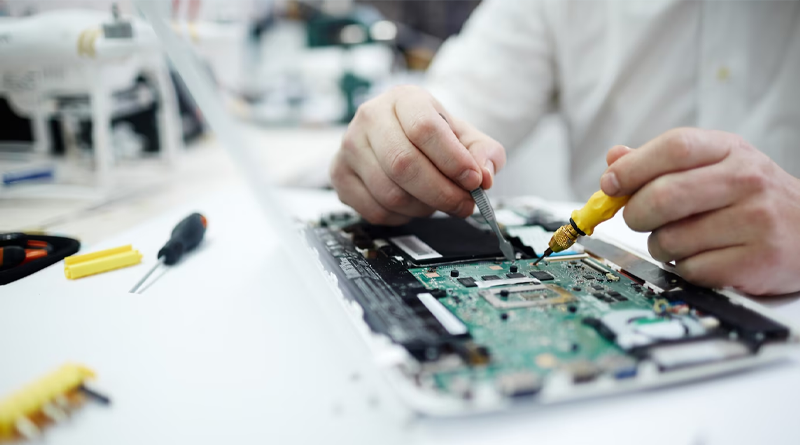
1.1 Point of Sale Terminals
POS terminals serve as the core hardware element in a POS system. These gadgets come with handling power, memory, and show screens. Modern POS terminals often feature touch screens for intuitive user interaction. They are critical in the processing of sales transactions, the execution of apps, and the connection with peripheral devices. They are built for toughness, dependability, and longevity because they must resist the rigors of regular use in a retail or hospitality setting.
Modern POS terminals typically feature:
- Processing Power: Multi-core processors capable of handling complex transactions swiftly.
- Memory: Sufficient RAM to support the operating system and multiple applications simultaneously.
- Touch Screens: User-friendly touch screen interfaces for intuitive interactions.
- Connectivity: Ports for connecting peripheral devices like barcode scanners and receipt printers.
- Operating System: Specialized operating systems optimized for POS functions, such as Windows Embedded or Linux-based distributions.
- Enclosures: Robust casings to protect the internal components from wear and tear.
The type of business, the volume of transactions, and the needed features all influence the selection of a POS terminal. For example, a high-end restaurant might opt for POS terminals with larger touch screens and rugged enclosures, while a small boutique might prefer more compact and mobile devices.
1.2 Peripherals
Peripherals supplement POS terminals and improve their usefulness. These incorporate standardized tag scanners, receipt printers, cash drawers, and client confronting shows. Every fringe fills a particular need, adding to the general effectiveness of the framework. Barcode scanners, for example, expedite the checkout process, while receipt printers provide customers with transaction records. They include:
- Barcode Scanners: These devices enable quick and accurate item identification. Laser and 2D standardized identification scanners are usually utilized in retail conditions, permitting clerks to examine item standardized identifications for effective checkout. They altogether diminish mistakes contrasted with the manual section.
- Receipt Printers: Receipt printers are imperative for producing exchange records for clients. There are different sorts, including warm and influence printers. Thermal printers are commonly used due to their speed, quiet operation, and low maintenance requirements.
- Cash Drawers: Cash drawers securely store cash, coins, and checks, and they only open when a sale is completed. They can be connected straightforwardly to the POS terminal, guaranteeing exact and safe money handling.
- Customer-Facing Displays: These displays are increasingly common in modern POS setups. They enable customers to see information about transactions and prices as you enter them, hereby, increasing transparency and minimizing mistakes. They also allow you to show promotional messages or ads, helping you to increase sales.
Each peripheral is chosen based on its specific role in the sales process. For instance, high-traffic retail stores might opt for rugged and high-speed barcode scanners, while fine-dining restaurants may prioritize aesthetically pleasing customer-facing displays.
1.3 Payment Devices
Sensitive payment information is encrypted and securely communicated to payment processors using payment devices.They are prepared to handle a range of payment options, including contact less payments, mobile wallets, and credit cards.
These devices include:
- Card Readers: Card readers are a ubiquitous component of POS systems, allowing customers to make payments using credit or debit cards. In addition to magnetic stripe readers (MSR), chip and PIN readers (EMV), and near-field communication (NFC) readers for contact less payments, they are available in a variety of formats.
- Signature Capture Devices: For certain transactions, especially in the hospitality sector, customers may need to provide signatures. Customers can sign electronically using signature capture devices, which are frequently integrated with card readers and provide an additional layer of security.
- Mobile Payment Acceptance: With the rise of mobile wallets and payment apps, many POS systems now support mobile payment acceptance. This requires NFC capacities to work with transactions utilizing cell phones or wearable gadgets like Apple Pay, Google Pay, or Samsung Pay.
- Secure PIN Pads: PIN pads provide a secure interface for customers to enter their PINs when making debit card transactions. They are fundamental for keeping up with the security of cardholder information and guaranteeing consistence with industry principles.
1.4 Network Infrastructure
The network infrastructure is the foundation of POS tasks. Organizations frequently carry out repetitive organizations and reinforcement frameworks to alleviate personal time chances.
The network infrastructure is the foundation of POS tasks, empowering correspondence between different parts of the framework. It should be hearty, solid, and get to guarantee continuous help. The following are significant parts of the network infrastructure:
- Local Area Network (LAN): LANs interface POS terminals, peripherals, and different gadgets inside an actual area, like a store or eatery. They maintain constant communication for quick updates on inventory, pricing, and transaction data.
- Wide Area Network (WAN): WANs connect multiple locations within a business, such as different stores or branches. To connect remote sites securely, businesses often use virtual private networks (VPNs) or dedicated leased lines with centralized management and reporting.
- Internet Connectivity: Many modern POS systems rely on internet connectivity to access cloud-based services, update software, and transmit transaction data to remote servers. High-speed, redundant internet connections are essential to minimize downtime.
- Redundancy and Failover: To ensure uninterrupted service, businesses often implement redundancy and failover mechanisms. Redundant network connections, backup power supplies, and failover servers can all be part of a comprehensive strategy to maintain POS system uptime.
Learn More About : What is a POS Report? Know the Top 5 POS Reports Your Restaurant Needs
2. Software Architecture
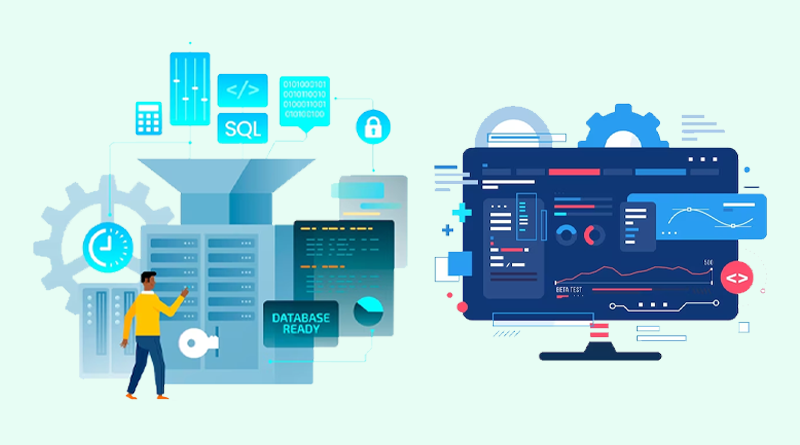
2.1 Operating Systems
POS terminals typically run on specialized operating systems optimized for reliability and performance. Windows Embedded, Linux-based versions, and custom-made operating systems are popular options. These operating systems give POS software apps a solid environment in which to function. These operating systems prioritize dependability and stability and are specifically designed to meet the demands of POS terminals. Regardless of the choice, the operating system serves as the platform on which POS software applications run.
2.2 POS Software
The system’s brain, POS software handles inventory management, transaction processing, and report generation. Item lookup, pricing management, and customer relationship management (CRM) are among its features. These software applications are highly specialized and designed to provide functionality such as:
Item Lookup: POS software allows cashiers to search for and identify items quickly, whether through barcode scanning, manual entry, or searching by product name or category.
Pricing Management: Pricing management features enable businesses to set and update prices for products and services. Depending on variables like demand and inventory levels, these systems might allow complicated pricing structures with discounts, promotions, and dynamic pricing.
Inventory Management: Inventory management is a critical function of POS software. It controls inventory levels, monitors product amounts, and ensures that goods are accessible when buyers want to purchase them. Organizations are able to make educated decisions about ordering and replenishing since stock information is consistently updated gradually.
Transaction Processing: At the core of POS software is transaction processing. This includes catching deals information, ascertaining costs, applying limits, and recording payment data. Credit cards, debit cards, cash, checks, and digital wallets are all supported by current point-of-sale (POS) systems.
Customer Relationship Management (CRM): Many POS systems include CRM features to track customer information, purchase history, and preferences. This information may be used to improve targeted marketing, loyalty programs and customer experience.
Employee Management: Businesses can manage access controls, monitor sales performance, and track employee shifts using employee management features. This helps ensure that only authorized personnel can perform certain functions within the POS system.
Integration: POS software often integrates with other systems, such as accounting software, e-commerce platforms, and inventory management systems which systematizes operations and reduces manual data entry.
Some POS systems operate on a client-server architecture, where one or more central servers manage multiple POS terminals.
2.3 Databases
When it comes to storing and retrieving information about customers, inventory records, and transaction data, databases are necessary. For this purpose, relational database management systems (RDBMS) like MySQL and PostgreSQL are frequently utilized. Data sets are the archives for all exchange information, client data, and stock records.
1. Non-relational database management systems, or Large volumes of semi- or unstructured data can be handled with NoSQL databases like MongoDB and Cassandra. They offer variable configuration plans, high adaptability and easy accessibility, making them suitable for use cases such as continuous control, content management and IoT applications.
2. Data is stored in straightforward text-based or binary files, such as CSV or JSON files, in flat file databases. While they miss the mark on question abilities and high level information connections of social data sets, level record data sets are lightweight and simple to make due, making them ideal for limited scope applications, information trade, and information chronicled purposes.
3. Relational databases like MySQL, PostgreSQL, and Oracle, which enforce data integrity through constraints and relationships, organize data into structured tables with preset schemas. They offer strong questioning capacities, exchange backing, and Corrosive consistence, going with them a favored decision for applications requiring complex information demonstrating, revealing, and exchange the board, like online business, money, and venture frameworks.
In order to guarantee the best speed and data integrity, an efficient database design is essential. The database structure, which includes tables for products, customers, transactions, and personnel records, should be carefully planned to fit the particular requirements of the POS system. Additionally, to safeguard against data loss and guarantee company continuity in the event of hardware failures or other unforeseen events, disaster recovery plans and database backups are crucial.
2.4 Integration with Other Systems
POS systems are rarely standalone entities. Enterprise Resource Planning (ERP) software, e-commerce platforms, and accounting software are among the other business-critical systems that they frequently integrate with. Improved operational efficiencies result from integration, which ensures that data flows seamlessly between various parts of the business. POS systems are rarely isolated entities; they often need to exchange data with other business-critical systems.
Key integration points include:
Enterprise Resource Planning (ERP) Software: Integration with ERP systems allows for centralized management of financials, procurement, and inventory across the entire organization. Data on sales, purchases, and inventory levels can be synchronized between the POS system and the ERP platform.
E-Commerce Platforms: Integrating the POS system with e-commerce platforms for companies that have online sales channels ensures that product details, costs, and inventory levels are uniform between real and virtual storefronts.
Accounting Software: Integration with accounting software automates financial transactions, reducing manual data entry and the risk of errors. This involves synchronizing data on sales, costs, and payroll.
Inventory Management Systems: Integration with inventory management systems ensures that stock levels are accurately tracked and replenished as needed. Businesses can avoid stockouts and overstock issues with the aid of real-time inventory information.
Customer Relationship Management (CRM) Software: A 360-degree view of customer interactions is made possible by POS systems’ integration with CRM applications. This considers customized promoting efforts and further developed client support. Automated ordering, invoice reconciliation, and supply chain management are all made easier by integration with vendor and supplier systems. This can smooth out acquirement processes and decrease costs.
Analytics and Business Intelligence Tools: Information produced by the POS framework can be incorporated with investigation and business knowledge devices to give further experiences into deals patterns, client conduct, and functional effectiveness. Accomplishing fruitful reconciliation frequently includes the utilization of use programming connection points (APIs), middleware, and information synchronization methods. The objective is to eliminate the need for manual data entry and reduce the likelihood of data inconsistencies by establishing a seamless information flow between systems.
3. Transaction Processing
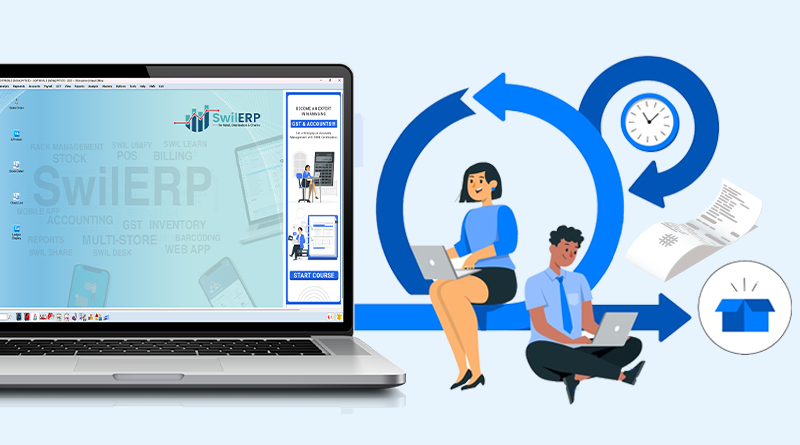
3.1 Data Flow
The core of POS operations is transaction processing. When a customer makes a purchase, the POS terminal records the transaction details, updates inventory, and processes payments. The scanning of the items, price lookup, tax computation, and payment authorization are only a few of the phases in this data flow. In order to reduce transaction times and improve the user experience, efficient data flow is crucial. Transaction processing is the core function of a POS system. It entails a number of actions that start when a customer makes a purchase and end when the transaction is finished.
The typical data flow in a transaction includes:
Item Scanning: The cashier scans or manually enters the items the customer wishes to purchase. Barcode scanners or RFID readers capture product information quickly and accurately.
Price Lookup: The POS system queries its database to retrieve the price of each scanned item. Pricing may change as a result of things like sales, discounts, or loyalty programs for customers.
Tax Calculation: Tax calculations are performed based on the location and type of products being sold. A few things might be excluded from specific expenses, and duty rates can fluctuate by district.
Payment Authorization: Once the transaction total is calculated, the POS system requests payment authorization from the payment processor. This entails confirming the customer’s payment method, making sure there are enough funds or credit available, and getting a response of permission or decline.
Receipt Generation: After payment authorization is received, the POS system generates a receipt for the customer. This includes checking the client’s installment technique, guaranteeing there are adequate assets or credit accessible, and getting an endorsement or decline reaction.
Inventory Update: Simultaneously, the POS system updates the inventory database to reflect the items that have been sold. This helps keep accurate stock levels and triggers reordering when inventory falls below a predefined threshold.
Cash Handling: If the customer pays with cash, the cashier calculates change and provides it to the customer. Cash drawers are often configured to open only when a cash transaction is completed, enhancing security.
Digital Receipts: In some cases, digital receipts may be offered to customers via email or SMS. These electronic receipts are more convenient and use less paper.
Transaction Records: All transaction data is recorded in the POS system’s database for later reporting, analytics, and auditing purposes.
Scenario 1: Traditional Brick-and-Mortar Retail
In a traditional retail setting, the data flow begins when a cashier scans a product’s barcode. The scanned data, including the product code, price, and description, is transmitted to the POS software, where it is matched with the product database.
The framework then, at that point, ascertains the absolute expense, including charges, limits, and advancements. After the client chooses an installment strategy, the exchange information is shipped off the installment handling entryway for approval. The system updates the inventory database and generates a receipt after authorization.
Scenario 2: Omnichannel Retail
In an omnichannel retail environment, where businesses operate both physical stores and online platforms, data flow becomes more complex. When a customer makes an online purchase for in-store pickup, the transaction begins online, with the data flowing into the POS system at the physical store for inventory management and fulfillment.
In order to guarantee accurate stock levels and a seamless customer experience, this necessitates seamless integration between the POS system and the e-commerce platform.
Best Practices:
1. Real-Time Data Synchronization: In order to guarantee accurate stock levels and a seamless customer experience, this necessitates seamless integration between the POS system and the e-commerce platform.
2. Offline Transaction Handling: While real-time synchronization is ideal, POS systems must also be capable of handling transactions offline. In scenarios where the network connection is lost, the system should still allow transactions to be completed and then synchronize the data once the connection is restored.
3. Error Handling: Robust error handling mechanisms are crucial to address issues such as declined payments or inventory discrepancies. The system should gracefully handle errors, provide clear notifications to users, and log the incidents for later analysis.
4. Data Validation: Data validation checks should be implemented at various stages of the data flow to ensure data accuracy and security. This incorporates confirming item codes, approving installment card data, and checking for copy exchanges.
3.2 Inventory Management
Inventory management is a cornerstone of efficient retail operations. In this section, we explore advanced inventory management techniques and technologies employed by businesses to optimize stock levels, reduce costs, and enhance customer satisfaction.
Just-in-Time (JIT) Inventory Management:
The JIT approach minimizes holding costs by ordering inventory only when it is needed. Retailers strategically time their orders to match demand, reducing excess inventory and associated carrying costs. JIT systems often integrate with POS systems to trigger automatic restocking when inventory levels fall below predetermined thresholds.
Inventory Forecasting and Demand Planning:
Advanced POS systems leverage historical transaction data to forecast future demand accurately. Machine learning algorithms examine seasonality and historical sales patterns to foretell which products would likely be in demand at particular times. This lessens overstocking or stockouts and helps firms make educated purchase decisions.
Inventory Optimization Software: To estimate the ideal inventory levels for each product, inventory optimization software incorporates data from numerous sources, including POS transactions, supplier information, and sales projections. Lead times, order sizes, and carrying costs are taken into account by these systems to make sure that firms maintain the ideal balance between stock availability and cost-effectiveness.
Sales Analytics:
Notwithstanding exchange handling and stock administration, POS frameworks assume a critical part in creating important deals examination.
Advanced Sales Metrics:
Beyond basic sales data, modern POS systems offer advanced metrics that delve into customer demographics, purchase history, and buying patterns. Customer personas, customized marketing efforts, and improved product offerings can all be made using this data.
A/B Testing and Promotion Analysis:
Retailers often run A/B tests and promotions to assess the impact on sales. POS systems can track the performance of these initiatives in real-time. For example, if a new product display arrangement is tested in-store, the system can compare sales data before and after the change to determine its effectiveness.
Predictive Analytics:
Prescient examination inside POS frameworks utilize verifiable deals information to figure future deals, assisting organizations with pursuing informed choices in regards to stock, staffing, and advertising techniques. Compelling stock administration is a vital advantage of POS frameworks.
By constantly following thing deals and stock levels, organizations can upgrade their stock, diminish squander, and forestall stockouts. Key components of inventory management in a POS system include:
Efficient inventory management not only ensures that products are available when customers need them but also helps businesses avoid over investment in excess stock.
3.3 Sales Analytics
For sales analytics, POS systems produce a lot of data that can be used. It entails the study of transaction data to learn more about various business elements, such as: Sales analytics can benefit from the plethora of data generated by POS systems:
- Sales Trends: Sales analytics allows businesses to track sales trends over time. This includes determining the products with the highest sales, those with the lowest sales, and seasonal variations in sales.
- Inventory Performance: Businesses can assess the performance of their inventory by analyzing how quickly products are sold. Making decisions on reordering, changing prices, and inventory turnover is made easier using this information.
- Pricing Strategies: Pricing can be optimized by businesses to increase sales and profit margins. Organizations can advance estimating to amplify income and overall revenues.
- Employee Performance: POS systems can track individual cashier performance, including transaction accuracy, average transaction value, and items scanned per minute.
- Customer Segmentation: Businesses can segment their customer base based on purchasing behavior, demographics, and other factors which allow for targeted marketing efforts and personalized promotions.
- Competitor Analysis: Sales analytics can include data on competitor pricing and market share, which helps businesses make informed decisions about pricing and positioning in the market.
Tools for sales analytics frequently offer visualizations, including charts and graphs, to make complex data easier to understand.
4. Security Measures
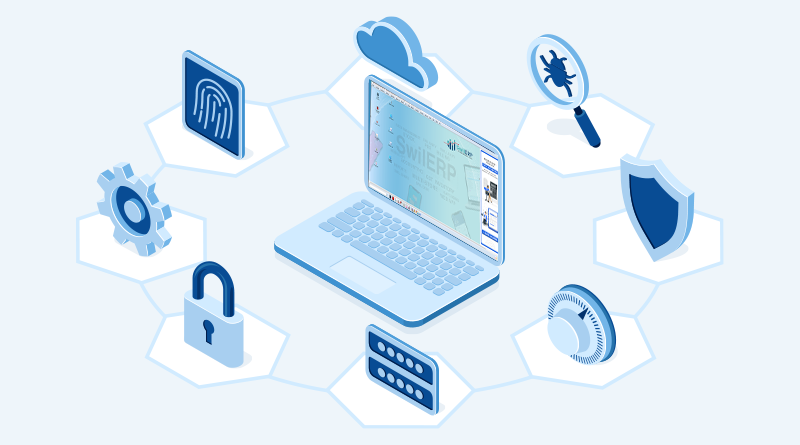
4.1 Encryption and Tokenization
Given the sensitive nature of payment data, security is of the utmost importance in POS operations. Payment information is protected during transmission and storage by using encryption and tokenization. Encryption ensures that data is unreadable to unauthorized parties, while tokenization replaces sensitive data with tokens that have no intrinsic value. Encryption and tokenization are fundamental security measures used to protect sensitive information:
- Encryption: Data encryption ensures that information transmitted between the POS terminal and the payment processor is secure and unreadable to unauthorized parties. The data is encrypted using strong algorithms, and only authorized parties possess the decryption keys necessary to make the data legible.
- Tokenization: Tokenization replaces sensitive payment data, such as credit card numbers, with unique tokens. Even if a token is intercepted, it cannot be used to make fraudulent transactions because it lacks the original payment data.
- End-to-End Encryption (E2EE): E2EE extends encryption protection from the POS terminal to the payment processor, ensuring that data remains encrypted throughout the entire transaction journey.
- Secure Sockets Layer (SSL) Certificates: SSL certificates are used to establish secure connections between the POS terminal and servers, further safeguarding data during transmission.
- Point-to-Point Encryption (P2PE): P2PE ensures that data is encrypted from the point of card entry (e.g., at a card reader) to the payment processor. This prevents interception of cardholder data at any point in the transaction process.
4.2 Fraud Prevention
To identify and stop fraudulent transactions, POS systems have fraud prevention measures. POS frameworks consolidate extortion anticipation instruments to identify and prevent false exchanges. Integration with fraud detection services, real-time authorization checks, and transaction monitoring for suspicious patterns are some of these mechanisms.
POS systems incorporate various fraud prevention mechanisms to detect and deter fraudulent transactions:
- Transaction Monitoring: POS systems often include transaction monitoring features that can identify unusual or suspicious patterns. For example, if a customer suddenly attempts to make multiple high-value transactions in a short period, the system may flag this activity for further review.
- Real-Time Authorization Checks: Payment authorization checks are performed in real-time to verify the authenticity of payment cards and to ensure that they have not been reported as lost or stolen.
- Integration with Fraud Detection Services: Some businesses integrate their POS systems with external fraud detection services that use advanced algorithms and machine learning to identify potentially fraudulent activity.
- Identity Verification: For certain types of transactions, identity verification measures may be employed, such as requiring customers to provide additional identification or credentials.
- EMV Chip Technology: EMV chip technology in payment cards provides additional security by generating a unique transaction code for each purchase. It is challenging for fraudsters to copy cards because this code cannot be used for additional transactions.
Successful fraud prevention protects businesses from financial damage as well as maintains the trust and certainty of clients. Businesses should find some kind of harmony between safety efforts and the comfort of the payment cycle to guarantee a positive client experience.
5. Choosing the right POS Solutions
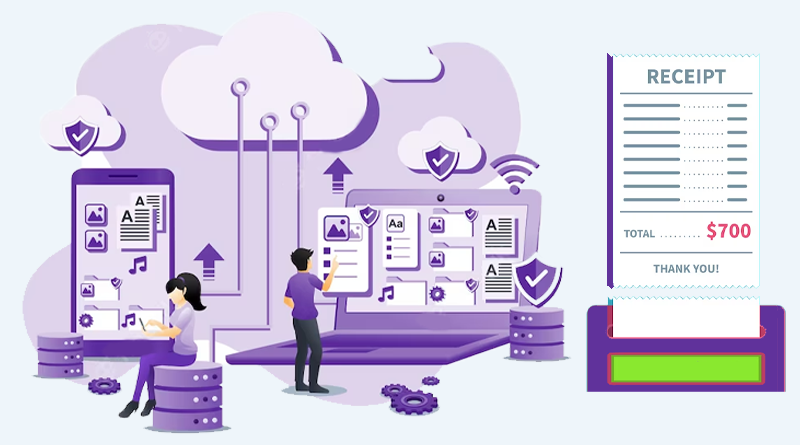
5.1 Cloud-Based POS
Due to their cost-effectiveness, accessibility, and scalability, cloud-based POS solutions are gaining popularity. Businesses can access their POS data from anywhere, and updates are automatically deployed. These systems offer numerous advantages:
- Scalability: Cloud-based POS systems can easily scale up or down to accommodate the changing needs of a business. Adding new locations, registers, or features is simplified.
- Accessibility: Businesses can access their POS data and management tools from anywhere with an internet connection. Businesses that employ remote workers or have multiple locations find this flexibility particularly advantageous.
- Automatic Updates: Cloud-based POS systems receive automatic updates and security patches, reducing the burden of manual maintenance.
- Data Backup and Recovery: Cloud providers typically offer robust data backup and recovery options, reducing the risk of data loss due to hardware failures or disasters.
- Cost-Efficiency: Many cloud-based POS systems operate on a subscription-based model, eliminating the need for large upfront capital expenditures.
However, businesses adopting cloud-based POS systems must carefully consider data security and privacy, as sensitive transaction and customer data are stored offsite.
5.2 Mobile POS
Businesses can perform transactions outside of a physical store thanks to mobile POS technologies. With mobile devices and card readers, merchants can accept payments at events, pop-up shops, and even on the go.
- Portability: Mobile POS systems are highly portable and can be used anywhere within a business premises or at off-site events. Businesses with pop-up shops, food trucks, or outdoor markets especially benefit from this.
- Flexibility: Mobile POS systems support a variety of payment methods, including credit and debit cards, mobile wallets, and contact less payments. Customers appreciate the convenience of paying with their preferred method.
- Inventory Management: Mobile POS apps often include inventory management features, allowing businesses to track stock levels and make sales even when products are not physically present at a central checkout.
- Receipt Options: Mobile POS systems can offer digital receipts sent via email or SMS, reducing paper waste and providing customers with an eco-friendly option.
- Improved Customer Engagement: Mobile POS systems enable sales associates to engage with customers on the sales floor, answer questions, and offer personalized recommendations.
Even though mobile POS systems are more adaptable and convenient, they still need to maintain the same level of security as traditional POS systems, especially when it comes to handling payment card information.
6. Challenges and Future Prospects

6.1 IoT Integration
POS systems can receive real-time inventory data from IoT devices like connected vending machines and smart shelf sensors.
The Internet of Things (IoT) is finding applications in the POS industry, enhancing efficiency and customer experiences:
- Smart Shelf Sensors: IoT sensors placed on store shelves can monitor inventory levels in real-time. When products are running low, the system can trigger automated reordering.
- Connected Vending Machines: Vending machines equipped with IoT technology can communicate stock levels, sales data, and maintenance needs to central systems, streamlining operations.
- Customer Tracking: To monitor and get valuable information about customer movement in a store to improve store appearance and customer experience, Beacons and IoT devices can be really great help.
Businesses may run more effectively and make data-driven decisions because to the increased data visibility and automation that comes with IoT integration in POS operations.
IOT applications are very relative & need to be figured out according to operations to achieve peak optimization in analytics skills and detailed training of AI models.
6.2 Data Privacy Concerns
As POS frameworks keep on gathering tremendous measures of client information, security concerns become progressively significant. Companies must ensure the responsible and secure handling of customer data and comply with regulatory requirements like the General Data Protection Regulation (GDPR).To address these concerns, businesses must:
- Implement Strong Security Measures: Robust encryption, access controls, and security policies are essential to protect customer data.
- Comply with Regulations: Businesses must adhere to data privacy regulations, such as GDPR or CCPA, which impose strict requirements on data handling and disclosure.
- Transparent Data Practices: Businesses should communicate their data collection and usage practices transparently to customers, gaining their trust and consent.
- Data Minimization: Collect only the data necessary for business operations and avoid unnecessary data collection.
Data Retention Policies: Implement data retention policies to ensure that customer data is not kept longer than necessary.
6.3 Scalability
Scalability is really difficult for organizations with extending activities. Traditional POS systems may struggle to accommodate the growing volume of transactions and the addition of new stores or locations. To address scalability challenges, businesses can:
- Adopt Cloud-Based Solutions: Cloud-based POS systems offer scalability by design. They can easily accommodate additional users, locations, and transactions as a business grows.
- Modular Architecture: Choose POS systems with a modular architecture that allows for the addition of new components or features without major system overhauls.
- Regular Performance Assessments: Continuously monitor the performance of the POS system and assess its ability to handle increased transaction volumes.
- Integration with Other Systems: Retail and restaurant establishments are increasingly placing an increasing emphasis on sustainability. Retail location (POS) frameworks, which are utilized to handle installments and oversee stock, can consume a ton of energy and create electronic waste.
Scalability is not only about handling increased transaction volumes but also about maintaining system performance and responsiveness as the business expands.
6.4 Artificial Intelligence in POS
Artificial Intelligence (AI) is making significant advances in POS operations. Machine learning algorithms can examine transaction data to identify shopping trends and provide personalized product recommendations to customers. To improve customer service and speed up order processing, POS systems also integrate chatbots and virtual assistants powered by artificial intelligence.
Machine Learning for Inventory Management: AI-powered algorithms can predict inventory needs more accurately, reducing instances of overstocking or stockouts.
Personalized Recommendations: AI can analyze customer purchase history and preferences to offer personalized product recommendations, increasing upsell opportunities.
Chatbots and Virtual Assistants: AI-powered chatbots and virtual assistants can handle customer inquiries, orders and support, improve customer service and reduce labor costs.
Predictive Analytics: AI can analyze sales data and external factors to make predictions about future sales trends, helping businesses plan for peak seasons and promotions.
Fraud Detection: AI algorithms can detect and prevent fraudulent transactions by identifying unusual patterns and anomalies in transaction data. For accuracy and relevance, the integration of AI into POS systems requires strong data
6.5 Sustainability
Sustainability is a developing worry in the retail and neighborliness ventures. Energy is used and electronic waste is produced by POS systems, especially those with electronic components. Sustainability initiatives for POS operations include:
- Energy-Efficient Hardware: Choosing energy-efficient POS terminals and peripherals can reduce energy consumption over time. Look for devices with ENERGY STAR certification or similar eco-friendly labels.
- Responsible Disposal: Proper disposal of electronic waste is essential. Businesses should have processes in place for recycling or disposing of outdated POS hardware and components in an environmentally friendly manner.
- Paperless Receipts: Encourage customers to opt for digital receipts rather than paper receipts, reducing paper usage and waste.
- Remote Management: Cloud-based POS systems can reduce the need for on-site maintenance and support, decreasing the carbon footprint associated with travel and commuting.
- Sustainable Materials: When choosing POS hardware, consider options made from sustainable materials or those with a smaller environmental impact in their manufacturing.
Businesses that prioritize sustainability in their POS operations can improve their brand image and draw in environmentally sensitive clients as consumers’ awareness of the environment grows.
Conclusion
Operations at the point of sale (POS) are the lifeblood of contemporary retail and hospitality organizations. The technical aspects of POS systems have been thoroughly examined in this study blog, including hardware elements, software architecture, transaction processing, security precautions, developing trends, difficulties, and potential outcomes.
From the hardware components that make up a POS terminal to the software architecture that powers it, every element is meticulously designed to provide efficiency and reliability. The core of POS operations is transaction processing and inventory management, allowing businesses to thrive and adapt in a competitive market. Security measures are paramount, given the sensitive nature of data handled in POS systems, and adherence to compliance standards is non-negotiable. Businesses that invest in the right technology, stay attuned to emerging trends, and prioritize security and sustainability will be well-positioned to thrive in the dynamic landscape of Point of Sale operations.

